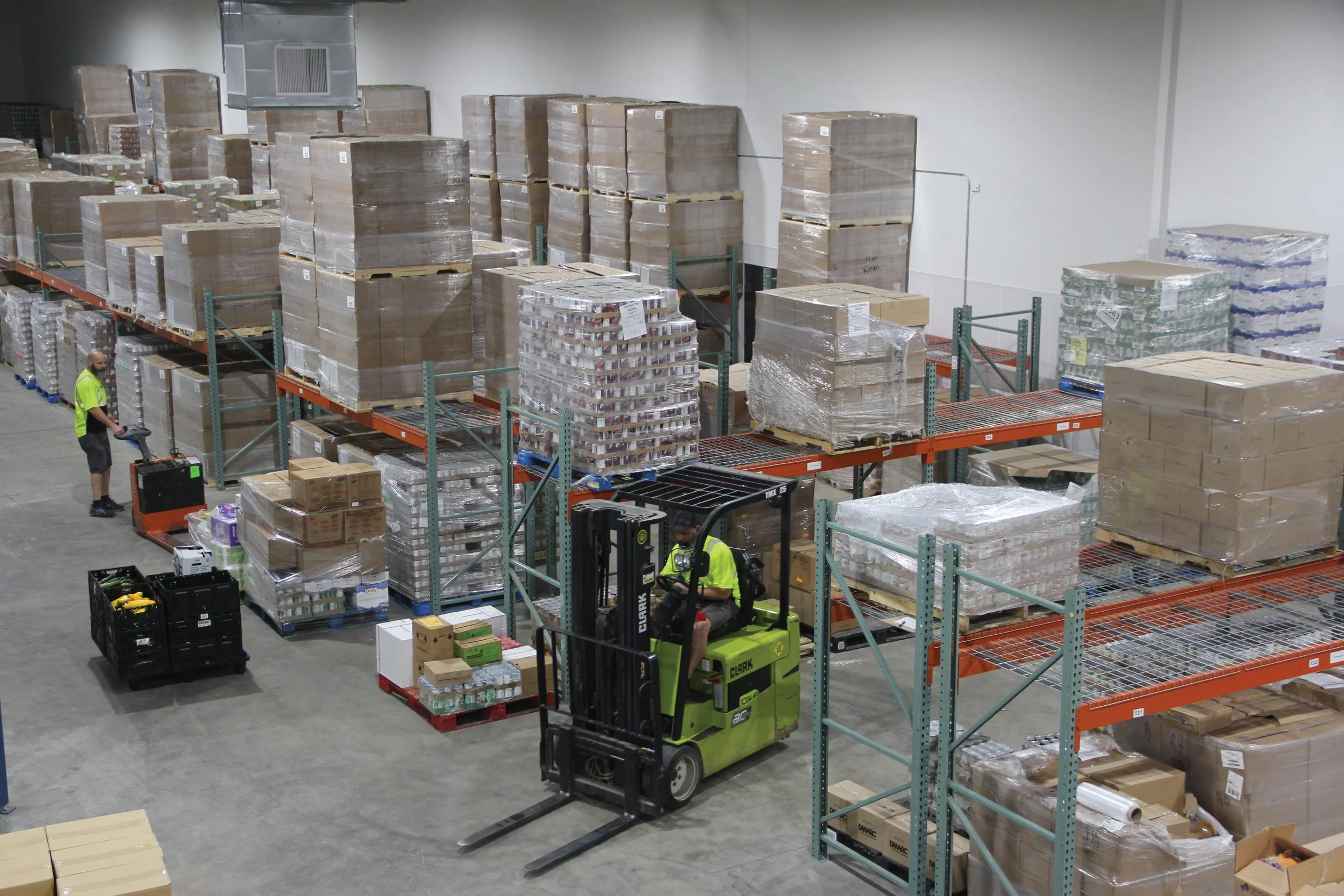DMARC staff work in the warehouse at the agency’s new building on Army Post Road in Des Moines. Photo contributed by DMARC
Hunger inequities
DMARC report highlights disparities in food insecurity, issues call for action to end lasting effects of redlining
BY MICHAEL CRUMB
People of color continued to experience food insecurity at disproportionately higher levels than others, according to a report from the Des Moines Area Religious Council that details just how much more frequently people of color sought assistance from the agency’s food pantry network.
In the 113-page report, DMARC officials called for more change to end the continuing effects of the redlining policies of the 1930s.
“While half of everyone assisted by the DMARC Food Pantry Network is White - Not Hispanic, you will see that stark racial disparities exist in every part of our community,” DMARC CEO Matt Unger said in the report. “These inequities are not unintentional, but are by design as specific federal, state and local policies were created to advantage and disadvantage various populations in our society.”
The report, released in late July, also looks at disparities that include, age, income, SNAP participation, income, frequency of visits, first-time visitors, veteran status and educational attainment. Food pantry visitors are asked a series of questions to help DMARC understand the needs in the community.
DMARC is an interfaith organization made up of more than 125 congregations from five faith traditions. It manages a food pantry network consisting of 14 sites, more than 20 mobile food pantry locations, food warehouses and various community supporters. According to its website, the food pantry system is the largest in Iowa, with sites in Des Moines, Ankeny, Clive, Johnston, Urbandale and West Des Moines.
DMARC food pantries served more than 43,500 unique individuals over the past 12 months. One-third of those were first-time users, the report showed.
The report showed that nearly 19% of DMARC food pantry users were Black, disproportionately higher than the 7.3% of the Polk County population, according to U.S. Census figures. About 18% of users were Hispanic, compared to a total population of about 8.8% in Polk County.
About 49% of food pantry users in the past year were white, according to the report, which also identified races including Native American/Alaskan native; Asian/native Hawaiian/Pacific Islander, and multi-race not Hispanic and other race/unknown not Hispanic.
In Des Moines, the zip code neighborhood of 50314, near downtown, had the highest concentration of pantry users at 26.9%.
DMARC officials used the report to cast light on the lasting effects of the redlining policies of the 1930s which prevented people of color from homeownership.
“The same neighborhoods that were redlined nearly 100 years ago are still some of the areas of greatest need today,” they said in the report. “This points to the lasting impact long-held racist policies of the past still hold today and a need to do more to change those impacts and create equity across our community.”
According to the report, 95.1% of pantry users earned less than 200% of the federal poverty level. For a family of four, that is $55,500 a year. For a family of three it is $46,060, $36,620 for a family of two, and $27.900 for one person.
Nearly 42% of users received SNAP benefits at some point this year. Enhanced benefits that were in effect because of the pandemic came to an end on April 1, resulting in an increase in traffic at food pantries in recent months.
According to the report, Hispanic residents are less likely to receive SNAP, disability and Social Security benefits, which DMARC officials said “can likely be attributed to documentation status limiting program eligibility and fear of repercussions of using programs, even when eligible.”
“This highlights the higher level of need for non-governmental resources for Hispanic people in our community,” officials said.
Unger said the report is designed to better help the agency understand the needs of those who need help and to collaborate with other nonprofits to work toward breaking down barriers.
“With this information, we can work with and learn from other nonprofit organizations who work with some of these groups that are facing the largest disparities,” he said. “It allows us to think through barriers to receiving assistance in a different and more targeted way.”

